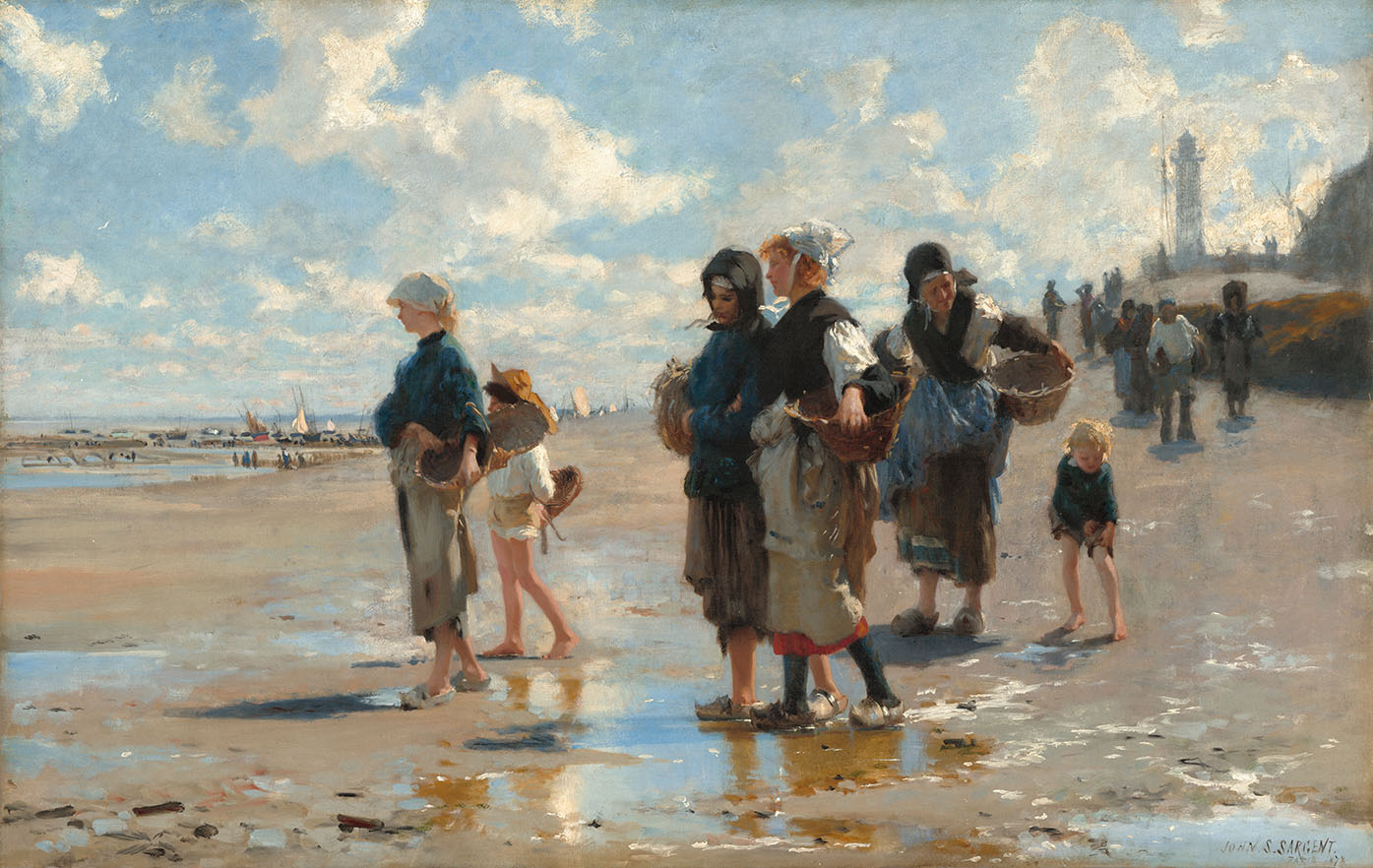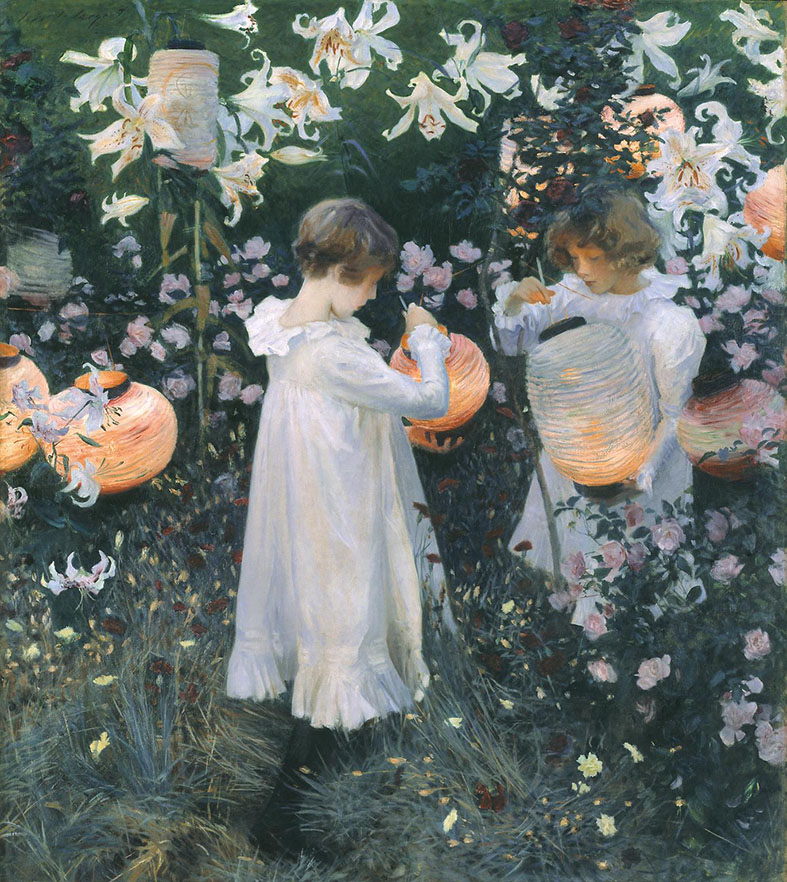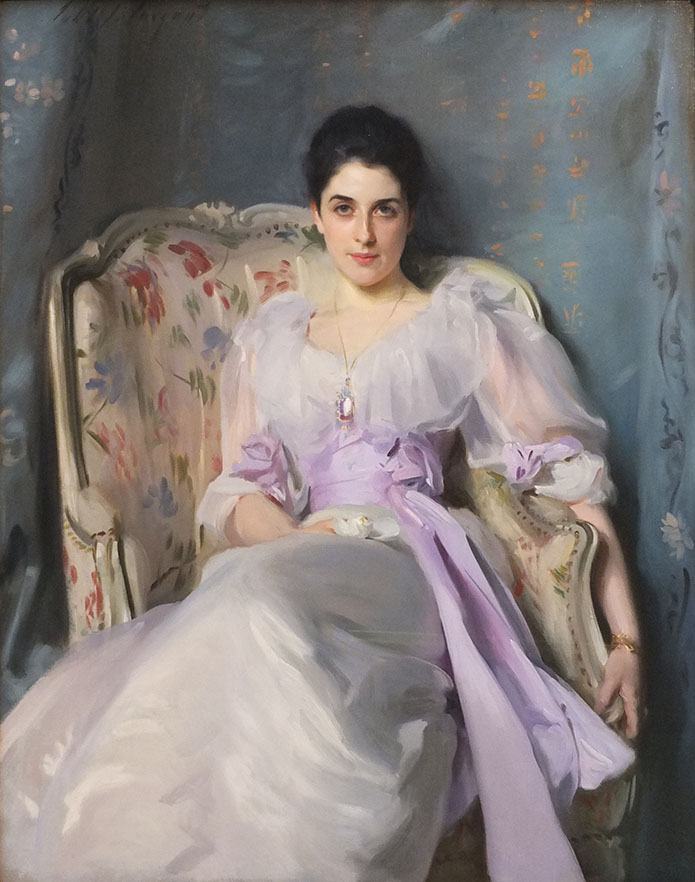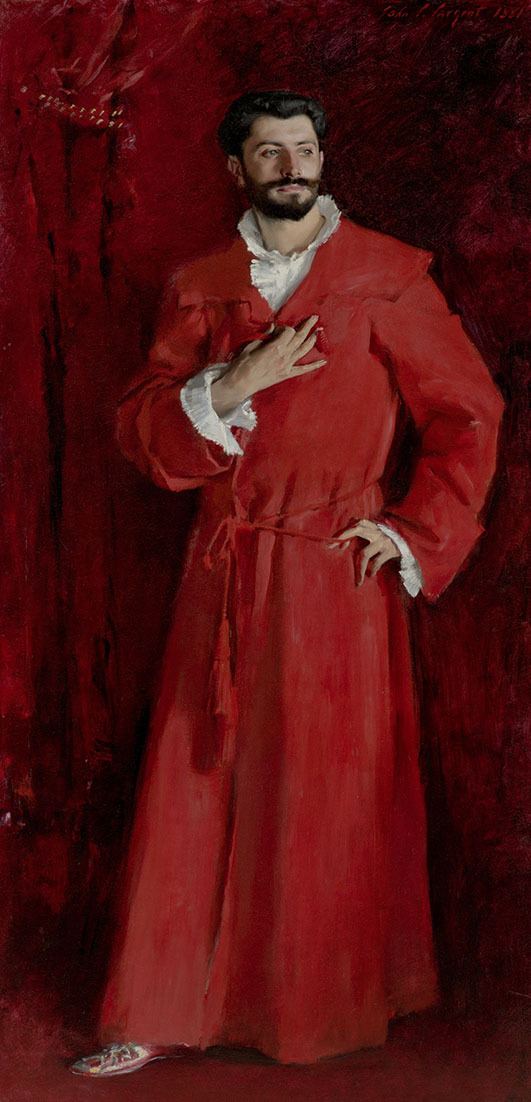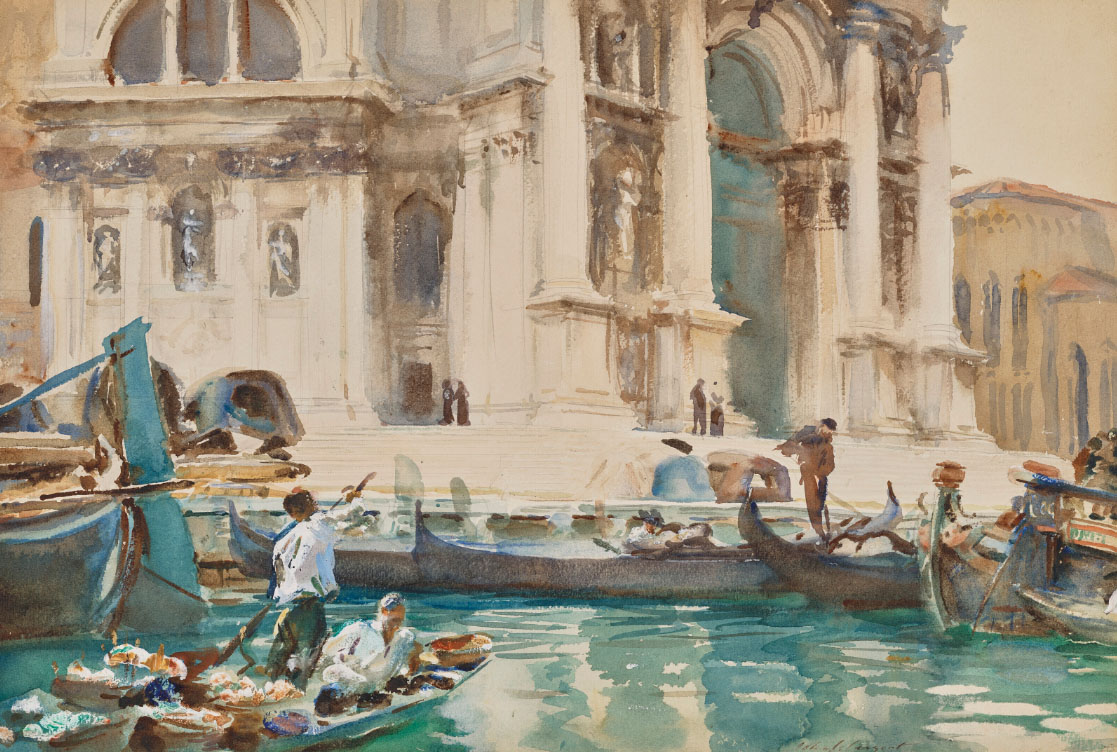Born to American parents, John Singer Sargent (Florence, January 1856 - London, April 1925) studied in Paris and settled permanently in the capital of the United Kingdom, although his life took place in numerous places on the Old Continent. His mother, Mary Singer, a painting enthusiast, was his main support in the choice and direction of his artistic career, constantly stimulating him. It was she who immediately recognized his talent for drawing, and his father Fitz William Sargent, a surgeon and also a skilled draftsman, recognized that his son was “quite an observer of nature.”
After his older brother died at the age of two in Massachusetts, his mother, after going through a nervous breakdown, decided that the family would settle in Paris. They traveled constantly and when Mary was pregnant they stopped in Florence due to a cholera epidemic and it was there where John was born in 1856. They led a quiet life, avoiding social events, and frequently visited museums and churches, giving the young man a careful education. In his first sketchbooks his parents detected his innate ability, and above all the speed with which he executed his work. He grew up to become a cultured and cosmopolitan young man, speaking French, Italian and German with ease. He showed a somewhat timid personality, although his temperament was generous and he was characterized as a man determined in his goals.
In 1874 in Paris he entered the workshop of Carolus Duran, a young French portraitist recognized for his modern method of learning. His workshop was “progressive”, and he did not share the traditional academic teaching that proposed a very careful basic drawing. He worked directly with oil on the canvas, a technique that required greater skill than the task of previously outlining with pencil or sepia. He quickly became the “star student” and knowledge of his perfect French led him to strike up a solid friendship with fashion portraitist Paul Cesar Helleu. Thanks to him he was able to meet artists of the stature of Monet, Degas, Rodin and Whistler among others.
From that moment, he began to turn to landscape painting and delve into the world of portraiture. He discovered that his talent for capturing the physical appearance of the character and his surroundings were easy and pleasant to do, they also allowed him to exhibit his works at the Paris Salon and at the same time became an excellent means of income that allowed him to earn comfortable money. Sargent was a bachelor who surrounded himself with family and friends, and his people skills led him to photograph many of them. Henry James, Edward VII of England, Isabella Stewart Gardner and many others were protagonists of his most precious works.
In 1878 he exhibited “Oyster Collectors in Cancales” at the Paris Salon, a work that today belongs to the collection of the National Gallery in Washington. We could assert that it is one of the founding moments of his artistic career. Carolus Duran's imprint leads him to open up the forms to achieve a looser and more vibrant painting, and this is clearly perceived in this magnificent piece.
After leaving Carolus Duran's studio, Sargent visited Spain. There he studied the work of Velázquez with absolute passion, and enchanted by Spanish music and dance, he painted “El jaleo”, a splendid painting full of movement where the female figure seems to fly with the rhythm of the music. All the viewer's attention is focused on its sinuous and illuminated arm. The hubbub of Spanish rhythms revives Sargent's fervor for music. He would become a faithful defender of modern composers such as Gabriel Fauré, and on several occasions he would interrupt his portrait sessions to play the piano with great mastery.
From 1880 onwards, Sargent continued to receive commissions for portraits of him. His career was launched. He had contacts with illustrious figures from culture, politics and the business world. He was a tireless artist who always demonstrated concentration, energy and an inexhaustible capacity for work. Contrary to other of his contemporary colleagues, he never had assistants, he prepared his backgrounds, placed his varnishes, and possessed a unique dexterity and speed that were perfected in a few years. Everything helped his fame and prestige to expand with great speed, which caused his portraits to be valued at more than considerable sums, which reached the equivalent of $150,000 today.
In these early years, he made large-format portraits, mainly of high-ranking ladies such as Madame Edouard Pailleron, Madame Ramón Subercasseaux, and Amalia Errázuriz, the wife of the Chilean Consul in the French capital. In all of them the individuality and personality of the sitters are revealed, as is the case in the magnificent group portrait “The Daughters of Edward Darley Boit” (1882) where he plays with an extremely bold composition and perfect lighting. One of the most notable works of this time is “Lady with a Rose”, a beautiful portrait of Charlotte Burckhardt with whom it is believed that he had a love relationship.
John Singer Sargent, photograph in his Paris studio, 1885.
Her most controversial work was the “Portrait of Madame X” (Madame Pierre Goutreau, 1884). Sargent was enthralled with the refined figure of the wife of the well-known French banker, and wanted to get rid of his traditional portraits absolutely linked to the style of Sorolla, Zorn, or Boldini, to create a different work, which was not even considered a commission. . The bluish white of the model's skin, which he achieved thanks to rice and lavender powders, led him to mix innumerable ranges of colors on his palette with which he finally managed, after almost a year of work, to achieve the creation of this extravagant figure in a velvety black dress that cost her countless critics. A society accustomed to his classic realistic portraits and great craftsmanship and ease, considered that this work did not deserve the slightest praise, something that led Sargent, among other things, to make the decision to settle permanently in London thinking about dedicating himself to painting. music and business. No one considered that it was the image of a modern woman drawn by a master of the art of portraiture. Sargent sold it to the Metropolitan Museum of Art only in 1916.
Before settling in London in 1886, he painted the portrait of “Dr. Pozzi at home.” You can see the importance that Sargent gives to clothing, and in this case in particular to the hands of the renowned surgeon. The entire ensemble shines in exquisite shades of red, perfectly placed, where the textures of both the clothing and the skin can be appreciated and the possibility of capturing the physiognomy of the sitter.
At first, British critics were not very favorable to Sargent, but his social ties with people like Henry James and several of his relevant friends helped him gain the admiration of his potential clients.
We cannot say that Sargent dabbled in the impressionist movement of which he was a contemporary. At some point he may have used some of his techniques, but he had his own version of it.
On very few occasions he used the resource of photography. He made his portraits from life, work that took between eight and ten sessions, although he usually captured the protagonist's face in the first interview. He previously visited his clients after having carefully agreed on the environment in which he would like to paint them, including his fee. He chose the clothing and furniture by having long conversations with them, which makes us infer that he undoubtedly worked with a model. alive. In the same way that he did with his outdoor landscapes.
Sargent's first major success at the Royal Academy came in 1887 when he presented “Carnation, Lily, Rose Lily”, a large canvas painted en plein air depicting two girls lighting paper lanterns in a garden in Broadway, Worcestershire. The piece was immediately acquired by the Tate Gallery.
In the 1890s Sargent produced the most important portraits of his career. It is estimated that he painted around fourteen a year. All large in size, and with very relevant characters. Perhaps one of the most refined is that of Lady Agnew of Lochnaw, which was succeeded by several by Robert Louis Stevenson and his family, Theodore Roosvelt, and that of Alice Vanderbilt Shepard, great-granddaughter of Cornelius Vanderbilt. It is important to note that the majority of these superb works are in private collections or in the most important museums in the United States and the United Kingdom.
Asher Wertheimer, a wealthy dealer living in London, commissions him to make a dozen portraits of his family, the largest commission from a single client that Sargent obtained. Wertheimer bequeathed most of these works to the National Gallery.
Around 1900 he was at the zenith of his popularity. Although he was still a young man, he began to travel and dedicate less time to painting portraits. It is in this same year that he paints “An Interior in Venice”, where four members of the Curtis family appear inside the Palazzo Barbaro. The work was a thunderous success.
In 1907 he officially closed his studio, painted his self-portrait that is in the famous self-portrait collection of the Uffizzi Gallery in Florence, and although museums continued buying his works, he perceived that critics were beginning to be merciless towards him. . He declines the title of “Sir” since he does not want to lose his American citizenship and travels to the United States very often. The avant-gardes such as futurism and cubism treated him increasingly harshly, but this did not alter in the slightest his stance against modernity.
Sargent dedicated his life to painting. He did it from morning until night. Without a rest. He left countless portraits in pencil, charcoal, sepia, which he called “Mugs”, and which he made while he was not working on one of his commissions. But it is in Venice, where influenced by the magic of the Serenissima its lights and its reflections, where Sargent stops being the superb fashionable portraitist and becomes an almost different artist. With the extreme skill of the great draftsman that he always was, he immediately captures the intense colors of different corners of that magical city. He painted from a gondola, looking for different angles and architectural fragments that he molded by letting the water and pigments flow from his masterful watercolors. He created these pieces with a joyful fluidity and it seems that he returned with them to his earliest artistic inclinations: nature, architecture, exotic people. To observe these watercolors is to live with the sunlight captured on a piece of paper transformed into a small bright world, where we feel in each brush stroke the flow of the water in the canals and the ineffable passage of time.
Calle della Rosa with the Monte di Pietà. Watercolor painted in Venice, circa 1904
His first major exhibition of watercolors was at the Carfax Gallery in London in 1905. In 1909 he exhibited eighty-six watercolors in New York, and the Brooklyn Museum purchased eighty-three.
On his return to England in 1918, Sargent was hired as a war artist by the Ministry of Information painting numerous scenes from the First World War.
He actively participated in different cultural institutions and died of a cardiovascular condition in 1925 at the age of 69. He is buried in Brookwood Cemetery, near Woking, in Surrey.
After going through their lives, we can conclude that it is quite common that these talented artists, with an excellent profession and close connections, knew success in life and were able to make a living from their painting without setbacks. Such was the case of Anthony Van Dyck or Joaquin Sorolla among many others. But it is interesting to know what is currently happening with its market, and with the demand for collecting compared to the supply of these works, already considered without a doubt as part of the history of art.
In November 2022, a small watercolor by Sargent titled “The Salute Facade” was sold at Christie's auction house in New York for $3,500,000. The work belonged to the Wertheimer Collection, the dealer who at the time brought Sargent's prices to very well-positioned market values. Watercolors with a Venetian theme are not only those that appear most frequently, but also those that always achieve the best prices no matter how sketched or unfinished they appear.
In 2018, the same auction house put up for sale an oil painting of San Geremia (Venice), former collection of David Rockefeller, which reached the important sum of 9,087. 500 u$.
Although the portraits were what unquestionably brought him to fame, the record price at auction to date was a piece representing Flameng and Paul Cesar Helleu, auctioned at Christie's New York in 2016, and which was sold in 1,100,000 u$. A portrait that is far from having the quality of those previously mentioned, but that has an additional value linked to the protagonists of the work, both close friends of Sargent.
And as an additional and curious fact, it is interesting to note that in the same year, but at Sotheby's in New York, an oil painting titled “Poppies” was sold, which turned out to be a study for his famous work “Carnation, lily, lily.” , rose” made in 1886, which achieved the sum of 6,858,000 u$.
Sargent's Venetian watercolors are and will be the expression of his true creative freedom. And buyers respond to this without hesitation. The portraits, which do not go up for auction because they are, as we mentioned above, in private collections or museums, lack the possibility of comparative values since they are practically non-existent on the secondary market.
A prolific, rich, cultured artist, a “bon vivant” in the best expression of this definition, achieved important prices in a market like the current one that is extremely competitive in all areas, despite the criticism he received during his life and even after his death. your demise.
In the case of Sargent, the apothegm that art and the market do not always go hand in hand has not been fulfilled. The quality, the refinement, the craft of a powerful artist, regardless of his social ties, surpassed the times and the avant-garde. And beauty continues to remain in a world crossed by the horrors of wars, pandemics, and the dizzying changes of reality.
* October 2023. Special for Hilario. Arts Letters Trades
